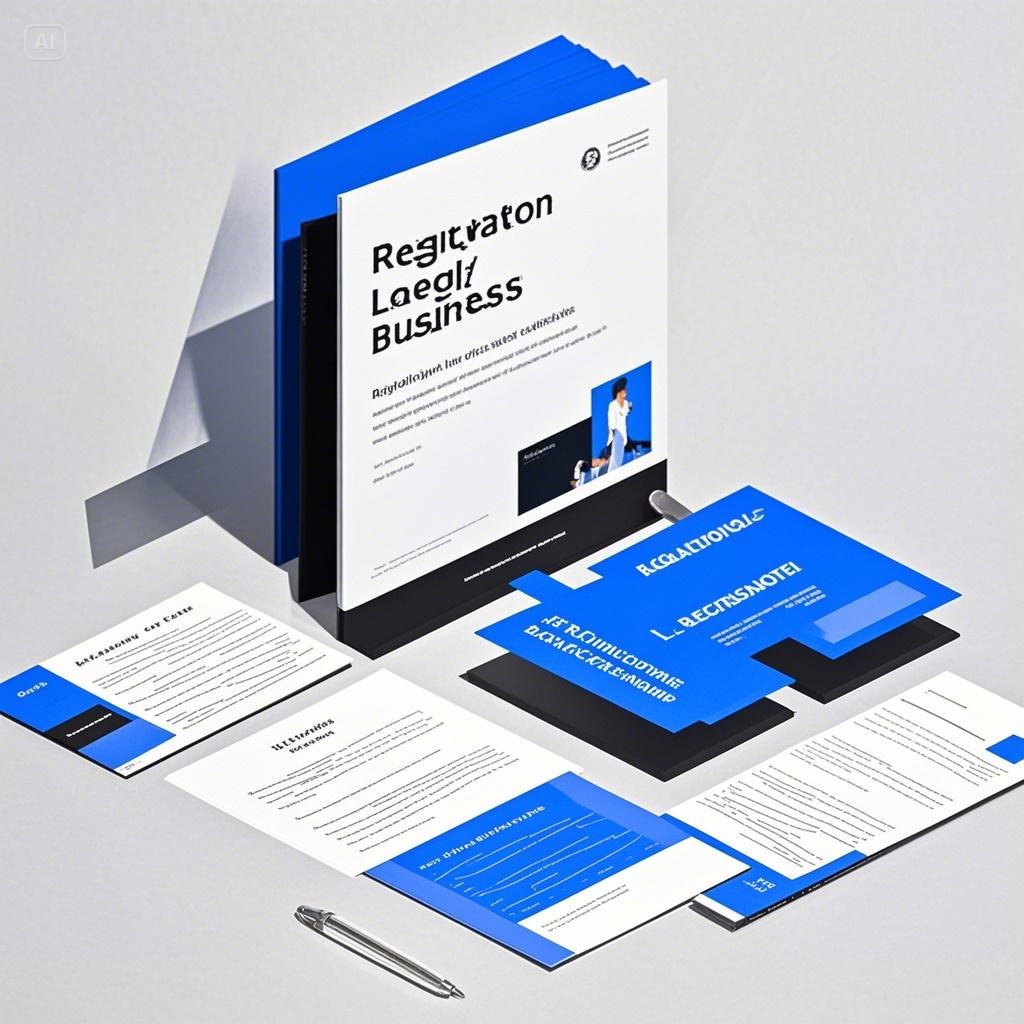Step-by-Step Guide to Starting a Business Legally

Starting a business is an exciting and challenging endeavor, but it’s essential to do it legally from the outset to avoid potential pitfalls down the road. Navigating the legal requirements can seem daunting, but by following a structured, step-by-step approach, you can establish your business on a solid foundation. This guide provides a comprehensive overview of the legal steps you need to take to start a business in [Your Country], ensuring compliance and setting you up for long-term success.

Starting a business legally is not just about complying with regulations; it’s about establishing trust with your customers, suppliers, and stakeholders. When you handle the legal aspects correctly from the beginning, you create a sense of professionalism and credibility that can significantly impact your success and longevity in the marketplace. A strong legal foundation also provides a framework for growth, adaptability, and resilience in the face of future challenges.
Step 1: Conduct Thorough Market Research
Before diving into the legal steps, it’s vital to understand your market and validate your business idea. Thorough market research will help you assess demand, identify your target audience, and understand your competition. This crucial step involves:
- Identifying your target market: Defining the specific demographics and needs of your potential customers.
- Analyzing your competition: Understanding who your competitors are, what they offer, and how you can differentiate yourself.
- Assessing market demand: Determining whether there is sufficient demand for your product or service.
- Understanding industry trends: Keeping up with the latest developments and trends in your sector.
- Validating your business idea: Testing your idea through surveys, interviews, and pilot programs to ensure its viability.
Effective market research provides you with the crucial insights you need to inform your business plan and tailor your legal strategy to your specific circumstances. This research will help ensure your business is viable and successful, and will help you make more informed decisions about compliance.
Step 2: Choose Your Business Structure
The legal structure of your business has a significant impact on your personal liability, taxes, and operational requirements. In [Your Country], common business structures include:
- Sole Proprietorship 📌A business owned and run by one person, where there is no legal distinction between the owner and the business.
- Partnership 📌A business owned and run by two or more individuals, who share in the profits or losses.
- Limited Liability Company (LLC) 📌A hybrid business structure that provides the limited liability of a corporation with the flexibility of a partnership or sole proprietorship.
- Corporation 📌A more complex business structure that is considered a separate legal entity from its owners, providing liability protection but requiring more formal procedures.
- S Corporation 📌A pass-through entity that allows for the business’s income, losses, deductions, and credits to flow through directly to its shareholders.
- Nonprofit Organization 📌A business that operates for charitable purposes, and its earnings are not distributed to the owners.
- Cooperative 📌A business owned and operated by the people who use its services.
- Joint Venture 📌A collaborative business endeavor where two or more parties combine their resources for a specific project or period.
The right business structure will depend on the size and nature of your business, your financial needs, and the level of liability protection you seek. It is recommended that you seek professional advice to understand the best structure for your specific situation.
Step 3: Choose a Business Name and Register It
Selecting the right business name is an important step, as it will become your brand identity and should resonate with your target market. Before settling on a name, you must also ensure that it is unique and available for registration. Here are the steps you should take:
- Brainstorm Potential Names Create a list of names that reflect your brand and align with your values.
- Check Name Availability Verify whether the name is available for use by conducting a search on the relevant government website, and searching online for similar names that may be in operation.
- Ensure Compliance The business name must comply with all legal regulations set by your country and the appropriate authorities.
- Consider Trademark Implications Before selecting a name, you should conduct searches for similar trademarks to avoid potential legal complications.
- Register Your Business Name Once you’ve chosen and verified the name, register your business name to protect your brand and comply with legal requirements.
- Select Domain Name If you intend to have a digital presence, securing a domain name and any social media handles are essential to safeguard your brand.
- Obtain Local Business Licenses You may need to obtain additional local business licenses depending on your location, industry, and type of operation.
Securing your business name through registration gives you exclusive rights to use it within your state or country and protects your brand from infringement. This step is crucial for protecting your brand identity and establishing a professional legal foundation.
Step 4: Obtain Necessary Licenses and Permits
Operating a business legally often requires obtaining specific licenses and permits, depending on your location and the nature of your business. These may include:
Failing to obtain the necessary licenses and permits can lead to fines, penalties, and even the closure of your business. Therefore, it is vital to research and comply with all licensing requirements before you begin operating your business. Seek guidance from your local regulatory authority or legal counsel, if needed, to confirm you are complying with all local, state, and national regulations.
By ensuring you secure all necessary licenses and permits, you establish a compliant foundation for your business and avoid legal and operational hurdles that could affect your business and its long-term success.
Step 5: Register for Taxes and Obtain an EIN
Registering your business for taxes and obtaining an Employer Identification Number (EIN), if required, is a crucial step for operating legally. These requirements will depend on your business structure and location, and some key steps include:
- Register for Business Taxes👈 You need to register your business with your country’s tax authority to ensure compliance with all local tax laws.
- Obtain an Employer Identification Number (EIN)👈 If your business is not a sole proprietorship, or if you intend to hire employees, you need to obtain an EIN, which is a tax identification number used by the IRS.
- Set up a Business Bank Account👈 Establish a business bank account to separate your personal and business funds for easier accounting and tax compliance.
- Understand your tax obligations👈 Familiarize yourself with all your tax obligations including income tax, sales tax, property tax, and payroll taxes.
- Consult a Tax Advisor👈 Consider consulting with a tax professional to help you navigate all tax-related regulations and filing obligations.
- Maintain Accurate Records👈 Keep detailed and accurate records of all your financial transactions to prepare tax returns and maintain compliance with tax laws.
- File Tax Returns Regularly👈 Make sure you file all required tax returns on time to avoid penalties and interest charges.
By complying with tax regulations, you can operate your business legally and avoid the potential for significant fines and penalties and demonstrate financial responsibility. You will need to maintain accurate records, file taxes, and engage with professional tax advisors when needed.
Step 6: Understand Labor Laws and Employment Regulations
If you plan to hire employees, you must comply with all applicable labor laws and employment regulations, which are designed to protect your employees and ensure fair treatment. This includes:
- Minimum Wage and Overtime Comply with all wage and overtime laws and regulations, which vary between the different regions.
- Employee Classifications Understand the different classifications such as full-time, part-time, or contract employment, and ensure you are classifying your workers correctly.
- Workplace Safety Provide a safe working environment for all employees by adhering to all safety guidelines and regulations.
- Equal Opportunity and Non-Discrimination Ensure your company provides equal opportunities and is free from any discrimination based on race, gender, age, religion, disability or national origin.
- Workplace Harassment Establish and enforce policies to prevent and address workplace harassment, and be aware of your company’s legal responsibilities.
- Employee Benefits Understand all the requirements for providing employee benefits such as health insurance, leave policies, and retirement plans.
- Proper Record Keeping Keep detailed and accurate records relating to employee details, including timesheets and payroll records.
Step 7: Secure Necessary Insurance Coverage
Having the right business insurance coverage can protect your business from potential losses and liabilities. Depending on your business, some insurance policies you should consider may include:
By having appropriate insurance coverage, you can protect your business from any unforeseen events, such as accidents, natural disasters, or legal claims. Consulting with a reputable insurance broker can help ensure you obtain all required insurance and minimize your exposure to risk.
Step 8: Draft Legal Contracts and Agreements
Having well-drafted contracts and agreements is essential for protecting your business interests and maintaining clear working relationships. You will need to consider drafting a number of different legal contracts including:
- Vendor Contracts Establish legal agreements with all your suppliers and vendors, specifying terms, costs, and timelines.
- Customer Contracts Create legally binding customer contracts that clearly outline the terms of service or sale.
- Employment Contracts Prepare proper employment agreements with your employees, including their responsibilities, compensation, benefits, and termination terms.
- Partnership Agreements Should you enter into a partnership, create a partnership agreement which clearly defines the roles, obligations, and revenue sharing.
- Lease Agreements If you are leasing any commercial space, make sure you have a proper lease agreement.
- Non-Disclosure Agreements (NDA’s) Protect your confidential information and intellectual property by drafting NDA’s when needed.
- Service Agreements Should you be providing services to clients, you will need service agreements which outline the scope of services and payment terms.
Conclusion: In conclusion, starting a business legally in [Your Country] requires careful planning, thorough research, and a detailed approach to compliance. By following this step-by-step guide, you can establish a strong foundation for your business, protect your assets, and navigate the complexities of the legal and regulatory landscape.
Remember, consulting with legal and financial professionals is always a wise investment to ensure you are fully compliant, and are well-positioned for long-term success. By taking the necessary steps to do things correctly from the beginning, you are setting the stage for a long and prosperous business.




